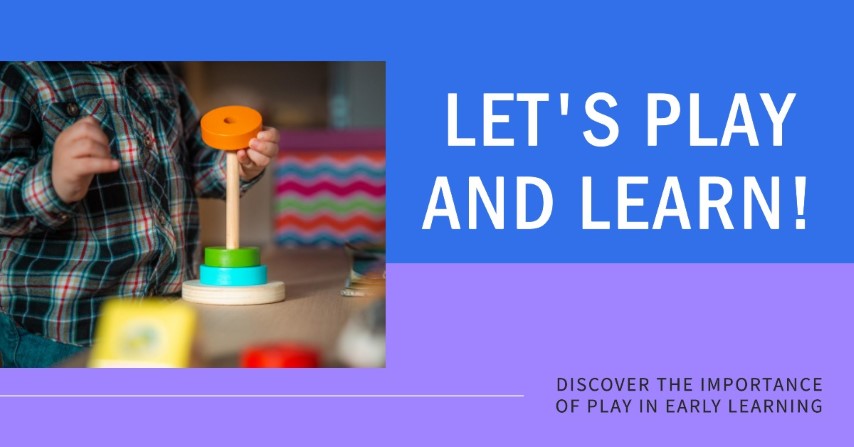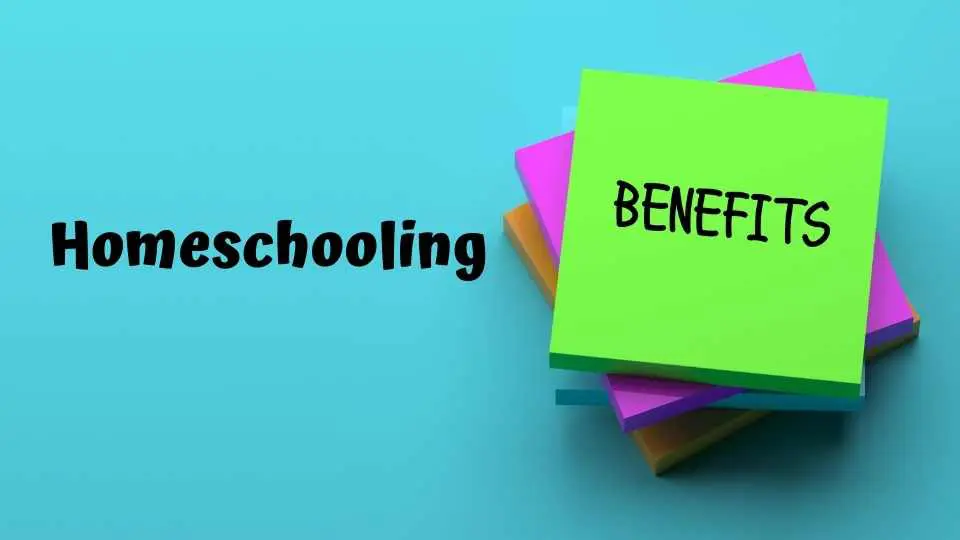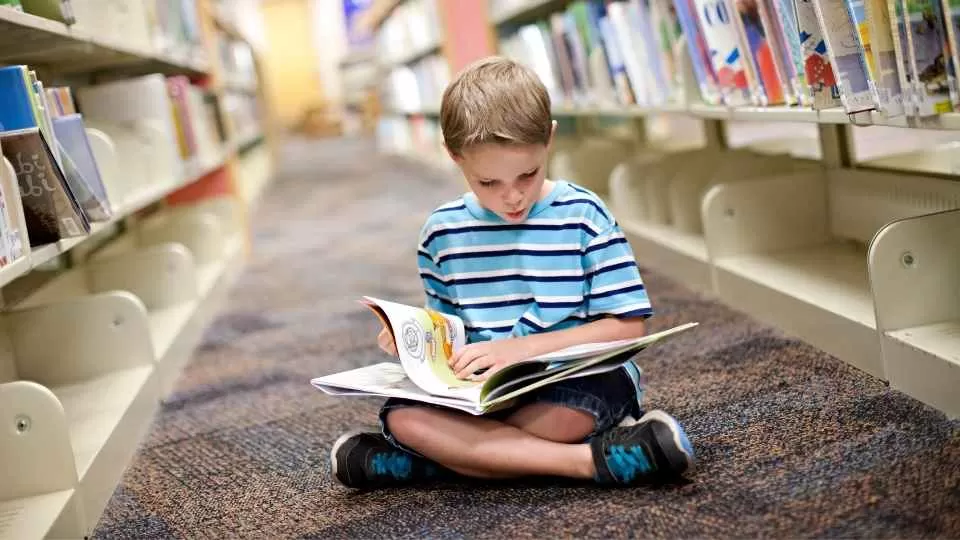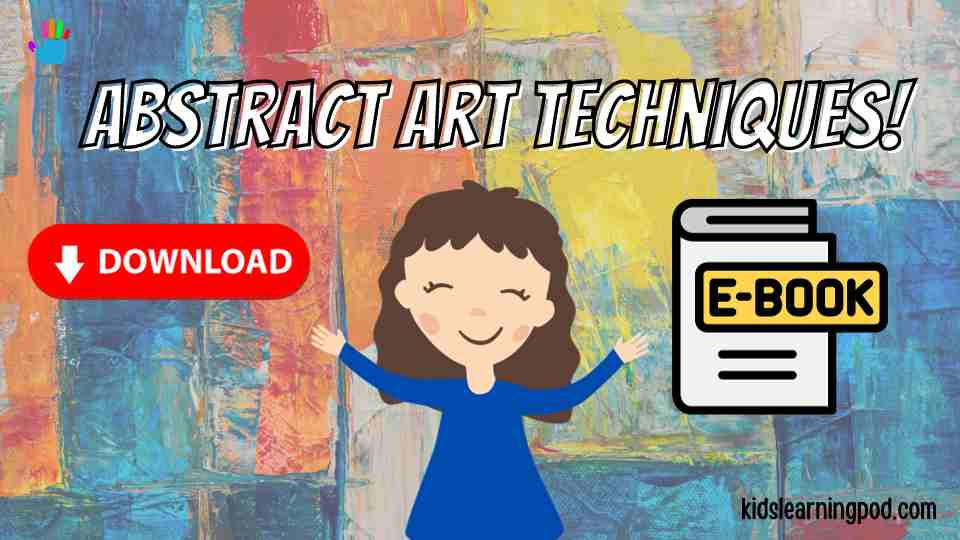
Educational Building Toys: Nurturing Young Minds
The introduction of educational building toys represents a paradigm shift, recognizing the importance of merging playtime with valuable learning experiences. As children immerse themselves in constructing structures or solving puzzles, they not only enhance their problem-solving abilities but also develop a deeper understanding of spatial relationships. This introduction sets the stage for an exploration into the diverse landscape of educational building toys and their profound impact on shaping young minds.
Importance of Play in Early Learning
In the world of childhood development, the importance of play during a child’s formative years cannot be overstated. Playtime serves as a vital arena where children not only engage in enjoyable activities but also lay the foundation for essential cognitive and motor skills. During this exploratory phase, children learn about the world around them, develop social skills through interaction with peers, and hone their problem-solving abilities through imaginative play scenarios.
Cognitive Development Through Play
Playtime acts as a natural and effective way to stimulate cognitive growth. As children engage in imaginative play, such as role-playing or constructing scenarios with toys, they enhance their creativity and critical thinking. The process of exploring new ideas and solving imaginary problems during play contributes to the development of memory, attention span, and decision-making skills.
Motor Skills Enhancement
Physical play, including activities like climbing, running, and playing with building blocks, is instrumental in refining a child’s motor skills. These activities not only enhance gross motor skills but also fine motor skills as they manipulate objects. For instance, picking up and placing building blocks requires precision and coordination, laying the groundwork for more complex tasks in the future.
The Evolution of Educational Toys
The shift from conventional toys to those with a clear educational focus underscores a broader recognition of the role play has in a child’s development. Educational toys have become more sophisticated, incorporating elements of science, technology, engineering, arts, and mathematics (STEM/STEAM). The evolution of these toys reflects a commitment to providing children with tools that not only entertain but also lay the foundation for a lifetime of learning. As we explore the various types and benefits of educational building toys, we gain insight into their role as dynamic instruments in nurturing the cognitive and creative capacities of young minds.
Tracing the Historical Development of Educational Building Toys
The 19th century marked a significant leap with the introduction of construction sets like Froebel’s Gifts, designed by German educator Friedrich Froebel. These sets laid the groundwork for modern educational building toys by emphasizing the interconnectedness of play and learning. The concept gained further momentum in the early 20th century, with the advent of iconic toys like LEGO bricks in the 1950s, revolutionizing the landscape of educational play.
How These Toys Have Adapted to Meet Changing Needs
Educational building toys have continually adapted to align with the changing needs of education and play. The late 20th century witnessed a surge in STEM-focused (Science, Technology, Engineering, and Mathematics) toys, reflecting a societal emphasis on preparing children for future technological advancements. Manufacturers began integrating educational principles into toys, blending fun with a purpose.
In recent years, the digital age has prompted a new wave of innovation. Augmented reality features, interactive elements, and connectivity have been seamlessly integrated into educational building toys, offering children a more immersive and technologically enriched learning experience. These adaptations not only cater to the evolving demands of education but also keep pace with the interests and preferences of the tech-savvy generations.
Types of Educational Building Toys
Educational building toys offer a diverse range, each tailored to specific facets of a child’s educational journey. Let’s delve into various categories that collectively contribute to a holistic learning experience.
Construction Sets: Building Foundations
Construction sets stand as pillars in the realm of educational building toys, laying the groundwork for spatial awareness and creative thinking. These sets typically include interlocking pieces that allow children to build structures, encouraging hands-on exploration and experimentation as in Crane and Truck Vehicle Playset (Amazon). As children connect, stack, and assemble, they develop an innate understanding of spatial relationships and geometric concepts, forming a solid foundation for future learning.

Educational Building Toys Sets Foster Spatial Awareness:
The act of manipulating pieces in construction sets (Amazon) requires children to visualize and understand the spatial relationships between components. This fosters the development of spatial awareness, an essential skill that extends beyond playtime, influencing activities such as reading maps, organizing spaces, and solving spatial problems.

The Role of Educational Building Toys in Promoting Teamwork and Problem-Solving Skills:
Construction sets often involve collaborative play, promoting teamwork and problem-solving. As children work together to bring their ideas to life, they learn to communicate, share responsibilities, and collectively solve challenges. These social and cognitive skills cultivated during play are transferable to various aspects of life, making construction sets valuable tools for well-rounded development.
STEM-based Building Toys: Fun with Science and More
The integration of Science, Technology, Engineering, and Mathematics (STEM) principles into educational building toys opens up exciting avenues for learning. Let’s explore how these toys offer not just play, but a dynamic exploration of scientific concepts.
Exploring How STEM-based Toys Introduce Scientific Concepts in a Playful Manner:
STEM-based building toys (Amazon) leverage play to introduce complex scientific concepts in an accessible and enjoyable way. Whether it’s constructing a simple machine or experimenting with physics principles through building, children engage with science organically. This hands-on approach makes abstract concepts tangible, fostering a love for science from an early age.

The Intersection of Educational Building Toys and Technology, Engineering, and Mathematics:
In the era of technological advancement, educational building toys have seamlessly integrated with technology, engineering, and mathematics. From robotic building kits to interactive electronic components, these toys expose children to the practical applications of STEM subjects. As children engage with the intersection of play and STEM, they not only develop foundational knowledge but also cultivate a curiosity for the technological wonders of the world.
In summary, construction sets and STEM-based building toys offer diverse avenues for exploration, ensuring that children’s learning experiences are not only educational but also immensely enjoyable.
Benefits of Educational Building Toys
Beyond mere entertainment, educational building toys offer a myriad of benefits that actively contribute to a child’s overall development.
Cognitive Development: Building Minds
Educational building toys play a pivotal role in enhancing critical thinking and problem-solving skills through hands-on construction. As children engage in the process of building, they encounter challenges that require logical thinking, planning, and troubleshooting. This active participation fosters the development of analytical skills, encouraging them to strategize, adapt, and overcome obstacles, thus laying a foundation for robust problem-solving abilities. (Amazon)

Motor Skills Enhancement: Hands-On Learning
The physical acts of building through educational toys contribute significantly to the improvement of motor skills and coordination in children. Engaging in hands-on construction tasks requires precise movements and manipulation of various components, promoting the development of both gross and fine motor skills. From grasping and placing building blocks to more intricate maneuvers, these activities enhance hand-eye coordination, balance, and overall dexterity.
Choosing the Right Educational Building Toy
Selecting the appropriate educational building toy involves careful consideration. Let’s explore the key factors to ensure a well-rounded and enriching play experience.
Top Educational Building Toys in the Market
Certain brands and types of educational building toys stand out in the market. Let’s explore these popular choices and understand what makes them unique.
LEGO Sets: Timeless Versatility
- The enduring popularity and versatility of LEGO sets.
- How LEGO engages children in creative storytelling through building.

Magnetic Building Blocks: Attracting Innovation
- Exploring the magnetic appeal of building blocks and their impact on spatial understanding.
- The role of magnetic construction in fostering creativity and imagination.
Educational Building Toys for Different Age Groups
Tailoring toys to specific age groups is essential for maximizing their impact. Let’s explore the varied options available for different stages of a child’s development.
Toddlers (1-3 years): Tactile Exploration
- The importance of tactile and colorful options for toddlers.
- Encouraging early learning through safe and engaging building toys.

Preschoolers (3-5 years): Building Foundations for Learning
Intricate designs play a pivotal role in stimulating the minds of preschoolers by providing a cognitive challenge that encourages exploration and problem-solving. As young children engage with intricate patterns and structures through educational building toys, they are prompted to analyze, plan, and make decisions. This process not only sharpens their spatial awareness but also nurtures critical thinking skills, laying the foundation for more advanced cognitive abilities.
Educational building toys serve as instrumental tools in preparing preschoolers for increasingly complex challenges. By introducing them to structures that require attention to detail, precision, and sequencing, these toys gradually elevate the complexity of tasks. This progressive approach not only aligns with the developmental stages of preschoolers but also instills a sense of accomplishment, boosting their confidence to tackle more intricate challenges. As preschoolers navigate the intricacies of educational building toys, they not only build physical structures but also construct a cognitive framework that enhances their readiness for future learning endeavors.
Incorporating Educational Toys in Learning Environments
Beyond playtime at home, educational building toys find a place in various learning environments. Let’s explore how these toys seamlessly integrate into educational settings.
Classroom Settings: Learning Through Play
Teachers seamlessly incorporate educational building toys into lesson plans, leveraging their interactive and hands-on nature to enhance the learning experience. By integrating these toys into various subjects, educators foster a dynamic and engaging classroom environment. The impact of hands-on learning extends beyond traditional teaching methods, capturing students’ interest and promoting active participation.
This interactive approach not only increases classroom engagement but also has a positive influence on academic performance. As students manipulate building toys to explore concepts, they gain a deeper understanding of abstract ideas and develop problem-solving skills. Through this innovative teaching strategy, educational building toys become valuable tools that bridge the gap between theory and application, creating a more effective and enjoyable learning journey for students.
Home-Based Learning: Supplementing Education with Play
Parents can enrich home-based learning by integrating educational building toys, striking a balance between academic teachings and interactive, hands-on experiences. These toys provide a tangible way for children to explore concepts learned in school, promoting a holistic understanding of subjects and fostering a love for learning through play.
DIY Educational Building Toys
Not all educational toys need to come in a box. Let’s explore do-it-yourself options using household items, encouraging creativity and innovation in a cost-effective manner.
Using Household Items: Everyday Objects, Extraordinary Learning
Transforming everyday items into educational tools is a powerful way to encourage resourcefulness and creativity through do-it-yourself (DIY) building projects. By repurposing common household objects, children not only engage in hands-on learning experiences but also develop a heightened sense of innovation. This approach not only makes learning more accessible but also instills a mindset of adaptability and imaginative problem-solving, showcasing the educational potential inherent in everyday materials.
Encouraging Creativity: The Power of Simple Materials
Simple materials possess the remarkable ability to spark a child’s imagination by serving as the catalyst for creative exploration. Everyday items, when repurposed in imaginative ways, inspire curiosity and ingenuity in young minds. This process not only transforms the mundane into something extraordinary but also nurtures a sense of wonder and excitement, showcasing the profound impact that simplicity can have on a child’s imaginative development.
Moreover, promoting a sense of accomplishment through do-it-yourself (DIY) educational toys adds a valuable dimension to a child’s learning experience. As children actively participate in the creation of their own toys using readily available materials, they not only gain a deeper understanding of concepts but also experience a tangible sense of achievement. This hands-on approach not only enhances learning but also instills confidence and a sense of pride, reinforcing the idea that education can be a fulfilling and rewarding journey of self-discovery.
Educational Building Toys and STEAM Education
The intersection of educational building toys and STEAM education is significant. Let’s explore how these toys contribute to a more profound understanding of science, technology, engineering, arts, and mathematics.
Teamwork and Problem-Solving: Building Skills Beyond Play
Teamwork and problem-solving skills cultivated through play extend far beyond mere amusement, playing a pivotal role in shaping children’s social and cognitive development. Several case studies underscore the profound impact of collaborative play on the acquisition of these crucial life skills. In instances where children engage in construction-based activities or intricate puzzles, a notable enhancement in teamwork emerges. Collaborative play promotes communication, negotiation, and the distribution of tasks, fostering an environment where children learn to navigate challenges collectively. These experiences contribute to a foundation of problem-solving skills that prove invaluable in real-world scenarios.
Furthermore, research consistently highlights the enduring effects of collaborative play on social development. Children who participate in team-oriented activities tend to exhibit improved empathy, communication, and conflict resolution skills. This social enrichment is not confined to childhood but lays the groundwork for healthier relationships and effective collaboration in adulthood. The synergy between teamwork and problem-solving within the context of play thus transcends mere recreation, becoming a powerful tool for shaping well-rounded individuals equipped with the interpersonal and cognitive skills necessary for success in an interconnected world.
Challenges and Solutions
While educational building toys offer numerous benefits, challenges may arise. Let’s explore common concerns and effective strategies to address them.
Age-Appropriateness Challenges: Matching Toys to Developmental Stages
Addressing age-appropriateness challenges is crucial when it comes to matching toys to developmental stages in children. As youngsters progress through various phases of growth, their cognitive, motor, and social skills undergo significant changes. Designing toys that align with these developmental milestones ensures that the play experience is not only enjoyable but also contributes meaningfully to a child’s learning journey.
However, achieving this balance poses challenges for toy manufacturers and educators alike. Striking the right chord between providing stimulation and avoiding overcomplexity is essential. A well-crafted toy should offer age-appropriate challenges that spark curiosity and promote skill development without overwhelming the child. Recognizing the diverse needs of different age groups is key to fostering healthy cognitive and emotional growth. By addressing age-appropriateness challenges, the toy industry plays a vital role in supporting children’s overall development and creating positive, enriching play experiences tailored to their evolving capabilities.
Strategies for selecting toys that align with a child’s developmental stage.
The Future of Educational Building Toys
As technology continues to advance, the future of educational building toys looks promising. Let’s explore upcoming trends and advancements that will shape the landscape of these educational tools.
Technological Advancements: Beyond Bricks and Blocks
Technology is revolutionizing the landscape of educational building toys by augmenting interactive features. The integration of augmented reality (AR) and virtual reality (VR) has emerged as a game-changer, propelling play and learning into a new dimension. These cutting-edge technologies enhance the educational value of building toys, offering immersive experiences that engage and captivate young minds. AR overlays digital elements onto the physical world, providing a seamless blend of real and virtual components, while VR transports children to simulated environments, fostering a deeper connection between play and education. As technology continues to evolve, the marriage of educational building toys and AR/VR is poised to redefine the way children learn, fostering creativity, problem-solving skills, and a passion for exploration.
Evolving Trends: From STEM to STREAM
Educational building toys are undergoing a transformative shift by expanding their scope into STREAM education, encompassing Science, Technology, Robotics, Engineering, Arts, and Mathematics. This holistic approach aims to provide a well-rounded learning experience, encouraging children to explore diverse disciplines and develop multifaceted skills. The integration of emerging trends aligns seamlessly with evolving educational methodologies, fostering a dynamic and interactive learning environment. From incorporating coding
Conclusion
In conclusion, educational building toys play a pivotal role in nurturing young minds. From enhancing cognitive abilities to fostering creativity and preparing children for future challenges, these toys are more than just playthings—they are tools for learning and development.
FAQs
What is the concept of educational toys?
What is the most popular building toy?
What are the benefits of building toys?
Cognitive Development: Building toys promote cognitive skills by requiring children to plan, problem-solve, and think critically. They learn spatial relationships, shapes, and sizes, enhancing their understanding of mathematical and scientific concepts.
Fine Motor Skills: The manipulation of building blocks and other components helps develop fine motor skills, enhancing hand-eye coordination and precision in movements.
Creativity and Imagination: Building toys encourage creativity as children envision and construct their own structures. They stimulate imaginative play, allowing children to create stories and scenarios around their creations.
Social Skills: When children engage in collaborative building activities, they develop important social skills such as communication, teamwork, and sharing. Working together on a construction project fosters a sense of cooperation and mutual achievement.
Problem-Solving: Building toys present challenges that require problem-solving skills. Children learn to overcome obstacles, adapt their plans, and find solutions, which are valuable skills in various aspects of life.
Patience and Persistence: Constructing intricate designs requires patience and persistence. Children learn to take their time, persevere through challenges, and experience the satisfaction of completing a project.
Educational Foundations: Many building toys are designed to incorporate educational elements such as letters, numbers, and basic science concepts, laying the groundwork for formal learning in a playful context.
Sensory Stimulation: Building toys often involve various textures, colors, and shapes, providing sensory stimulation that contributes to a child’s overall sensory development.
Confidence Building: Successfully completing a construction project, whether simple or complex, boosts a child’s confidence and self-esteem. They take pride in their creations and are encouraged to explore and learn more.
Long-Term Skills: The skills developed through playing with building toys, such as critical thinking, creativity, and collaboration, have long-term benefits that extend into academic and professional life.
How to choose educational toys?
Learning Objectives: Identify specific skills or concepts you want to enhance.
Versatility: Choose toys that offer various ways to play.
Safety: Ensure toys meet safety standards and lack choking hazards.
Durability: Select well-made toys that can withstand active play.
Interest and Engagement: Align toys with the child’s interests and preferences.
Open-Ended Play: Opt for toys that encourage creativity and imagination.
Real-World Connection: Choose toys with relevance to everyday life.
Reviews and Recommendations: Check feedback from other parents and trusted sources.
Budget Considerations: Balance affordability with educational value.
What types of toys are popular?
Dolls and Action Figures: Figurines representing characters for imaginative play.
Board Games: Games that involve strategic thinking, decision-making, and often teamwork.
Art and Craft Supplies: Materials for creative expression, drawing, painting, and crafting.
Educational Electronic Toys: Interactive devices designed to teach various subjects or skills.
Puzzles: Challenges that promote problem-solving and spatial awareness.
Outdoor Toys: Items like bicycles, scooters, and sports equipment for active play.
Remote-Controlled Vehicles: Cars, drones, or other vehicles operated remotely.
Science Kits: Kits that allow children to conduct simple experiments and learn scientific principles.
Plush Toys: Soft and cuddly stuffed animals or characters for comfort and companionship.
What toys can you build with?
LEGO Sets: Versatile building sets with interlocking plastic bricks.
Magnetic Building Tiles: Tiles with magnets that connect to form various shapes.
Construction Sets: Kits with specialized pieces for building specific objects or scenes.
Wooden Blocks: Solid wood blocks for stacking and constructing.
Cardboard Boxes: Repurposed for creative building projects, forts, or playhouses.
Playdough or Clay: Moldable materials for sculpting and creating shapes.
Recyclables: Empty boxes, bottles, and containers repurposed for building.
Straws and Connectors: Tubular pieces and connectors for building structures.
Household Items: Everyday items like cups, spoons, and containers for imaginative construction.





